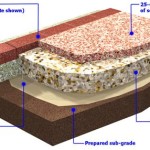Essential Aspects of Creating Fluffy Bedding
Fluffy bedding is the epitome of comfort and luxury. It provides a cozy haven to sink into after a long day and can significantly enhance the quality of your sleep. Achieving fluffy bedding, however, requires attention to several key aspects.
1. Choosing the Right Materials:
The materials used in your bedding significantly impact its fluffiness. Natural fibers like cotton, linen, and wool are known for their breathability and ability to create a fluffy texture. Synthetic materials like polyester and microfiber can also achieve a fluffy look, but they tend to be less breathable and prone to pilling.
2. Selecting the Right Weave:
The weave of your bedding fabric determines the thickness and density of the fabric. A percale weave creates a crisp and smooth surface, while a sateen weave results in a soft and silky feel. For maximum fluffiness, opt for a weave that allows for air circulation, such as a percale or a low thread count sateen weave.
3. Washing and Drying Techniques:
Proper washing and drying techniques are crucial for maintaining the fluffiness of your bedding. Use a gentle detergent and avoid fabric softeners, which can weigh down the fabric. Tumble dry your bedding on a low heat setting with dryer balls to prevent clumping and restore fluffiness. Additionally, consider air-fluffing your bedding outside on a sunny day to revitalize the fibers.
4. Shaking and Plumping:
Regularly shaking and plumping your bedding helps distribute the fibers and maintain their fluffiness. After making your bed, give it a good shake to evenly redistribute the filling. Plumping the pillows and blankets by gently fluffing them with your hands will also enhance their loftiness.
5. Avoiding Overfilling:
Overfilling your bedding can prevent it from achieving maximum fluffiness. Use the recommended amount of filling specified by the manufacturer to allow the fibers to expand and create a lofty texture. Avoid packing your duvet or comforter too tightly, as this can compress the fibers and reduce fluffiness.
6. Using a Mattress Topper:
A mattress topper can provide an additional layer of fluffiness to your bed. Choose a topper made from a breathable and supportive material, such as memory foam or latex. The topper should be thick enough to provide extra cushioning and lift your bedding, creating a more cloud-like feel.
7. Investing in Quality Bedding:
High-quality bedding is often a worthwhile investment. It is typically made from premium materials, expertly crafted, and built to last. Investing in quality sheets, duvet covers, and blankets will ensure that your bedding remains fluffy and luxurious for years to come.
Conclusion:
Achieving fluffy bedding requires a combination of thoughtful material selection, proper care, and regular maintenance. By following the essential aspects outlined above, you can create a cozy and inviting sleep haven that will provide a wonderful night's rest for years to come.

How To Make Your Bed Look Fluffy In 5 Easy Steps She Gave It A Go

How To Make Your Bed Look Fluffy In 5 Easy Steps She Gave It A Go

How To Get That Fluffy Bed Look Stefana Silber

How To Make Your Bed Look Fluffy In 5 Easy Steps She Gave It A Go

How To Create A Full Layered Fluffy Bed My Sweet Savannah

7 Ways Stylists Get A Cozy Bed With Fluffy Bedding Chrissy Marie Blog

How To Get That Fluffy Bed Look Stefana Silber

How To Make Your Bed Look Fluffy In 5 Easy Steps She Gave It A Go

How To Fluff A Down Comforter Living Spaces

How To Make A Cozy Fluffy Bed 6 Steps








